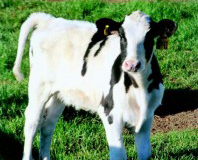Read the latest information on
Foot-and-mouth disease
 You may be aware of the current outbreak of Mycoplasma bovis and the eradication effort that is underway in New Zealand.
You may be aware of the current outbreak of Mycoplasma bovis and the eradication effort that is underway in New Zealand.
M. bovis is present in Australia, so you may wonder why the response in New Zealand is so different to that in Australia, and whether there is anything you should be doing to protect your herd from infection. The answers are important for your herd and your back pocket.
Animal Health Australia’s Senior Manager Biosecurity, Dr Rob Barwell, is reminding cattle producers to be aware of M. bovis, understand what to look out for and how to avoid introducing the disease into your herd.
M. bovis is a bacteria which affects both dairy and beef cattle, impacting the health, welfare and productivity of infected animals. Infection can cause a variety of clinical diseases including mastitis, respiratory disease and lameness. The disease has also been shown to have an important impact on calf health and productivity, commonly causing pneumonia and middle ear infections in infected animals.
Along with the impacts on animal health come important economic impacts to producers through treatment costs, veterinary fees, reduced production, deaths and culling losses. To make matters worse, once infected, cattle continue to shed the bacteria for months to years, causing continued losses.
M. bovis is present in Australia, with estimates predicting that currently less than 1 per cent of our national dairy herd is affected. In Australia, the disease is managed by industry and producers as eradication has previously been deemed infeasible. New Zealand has decided to try and eradicate the disease because it is only known to be on a limited number of properties at this stage after its recent introduction to the country.
Biosecurity should be a priority for producers when it comes to M. bovis as once the bacteria makes it onto a property, the disease can be very difficult to eradicate. This is due to the many methods of transmission including udder to udder infection in the dairy, consumption of contaminated milk in both dairy and beef calves and transmission in the environment, where the bacteria can survive for extended periods of time.
However, it is also worth noting that if producers think they already have M. bovis on their property, there are ways to check for the disease and ways to manage it to achieve better animal health and economic outcomes for the individual producer. Producers should discuss this with their veterinarian.
For more biosecurity tips, see Farm Biosecurity’s Dairy Cattle page.